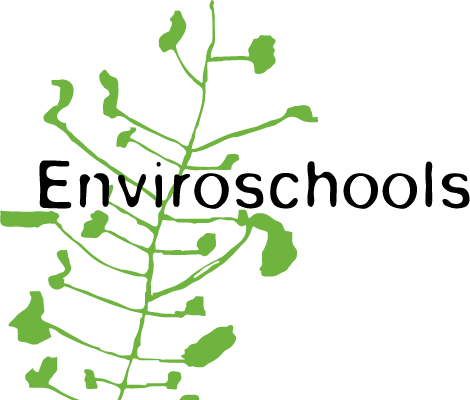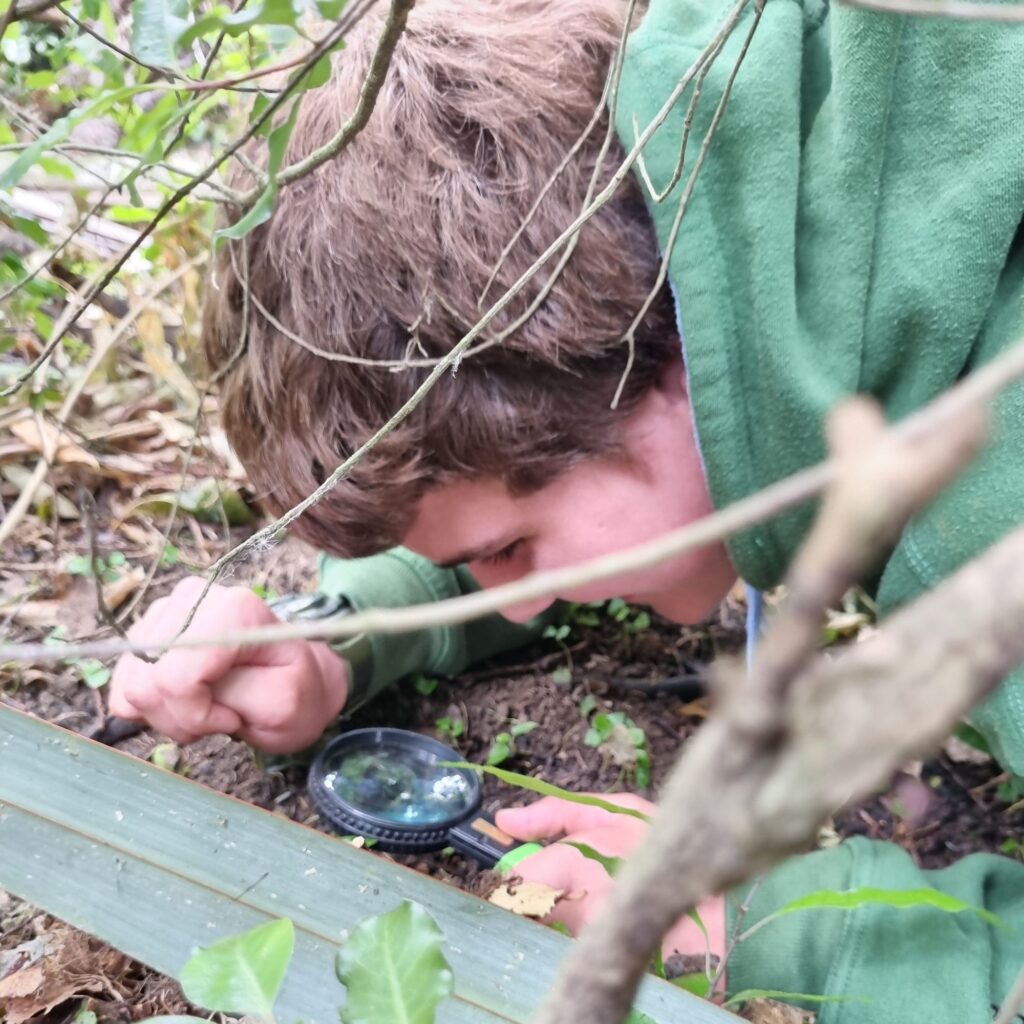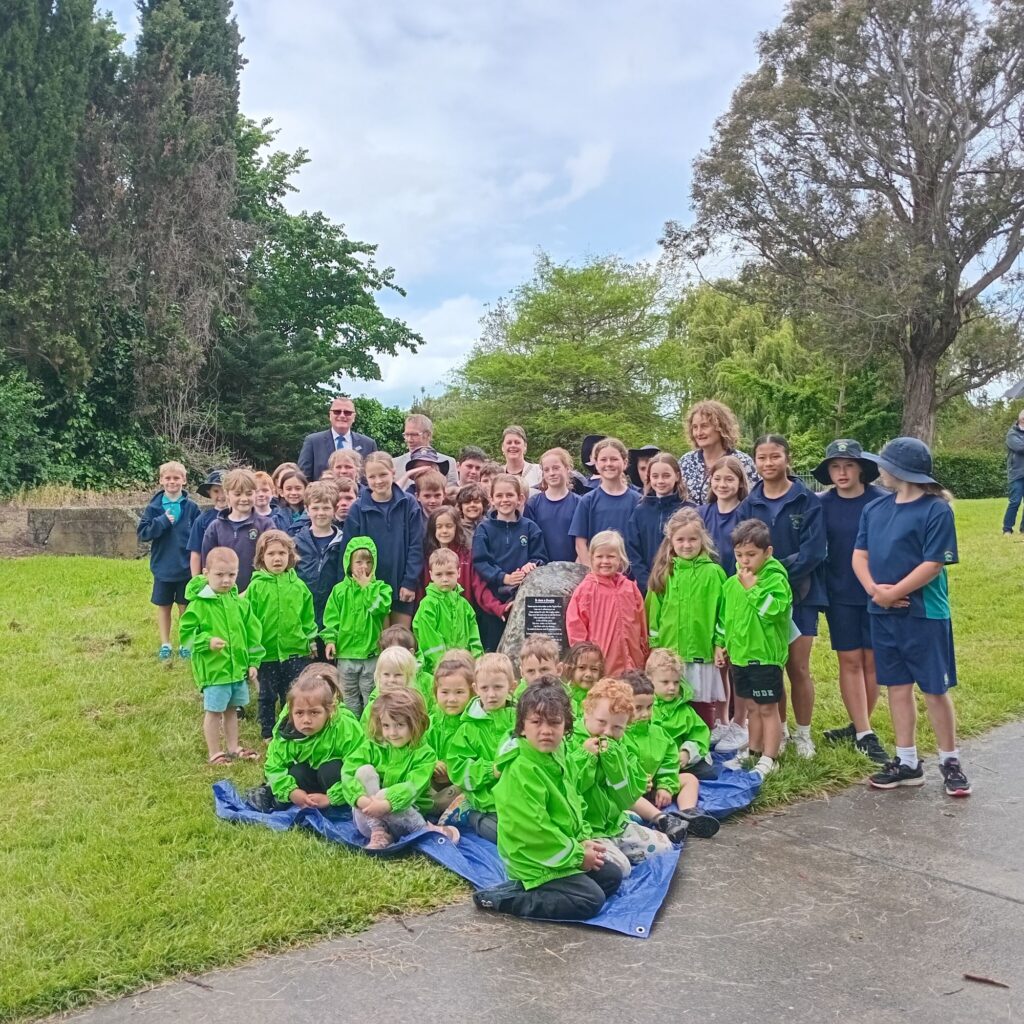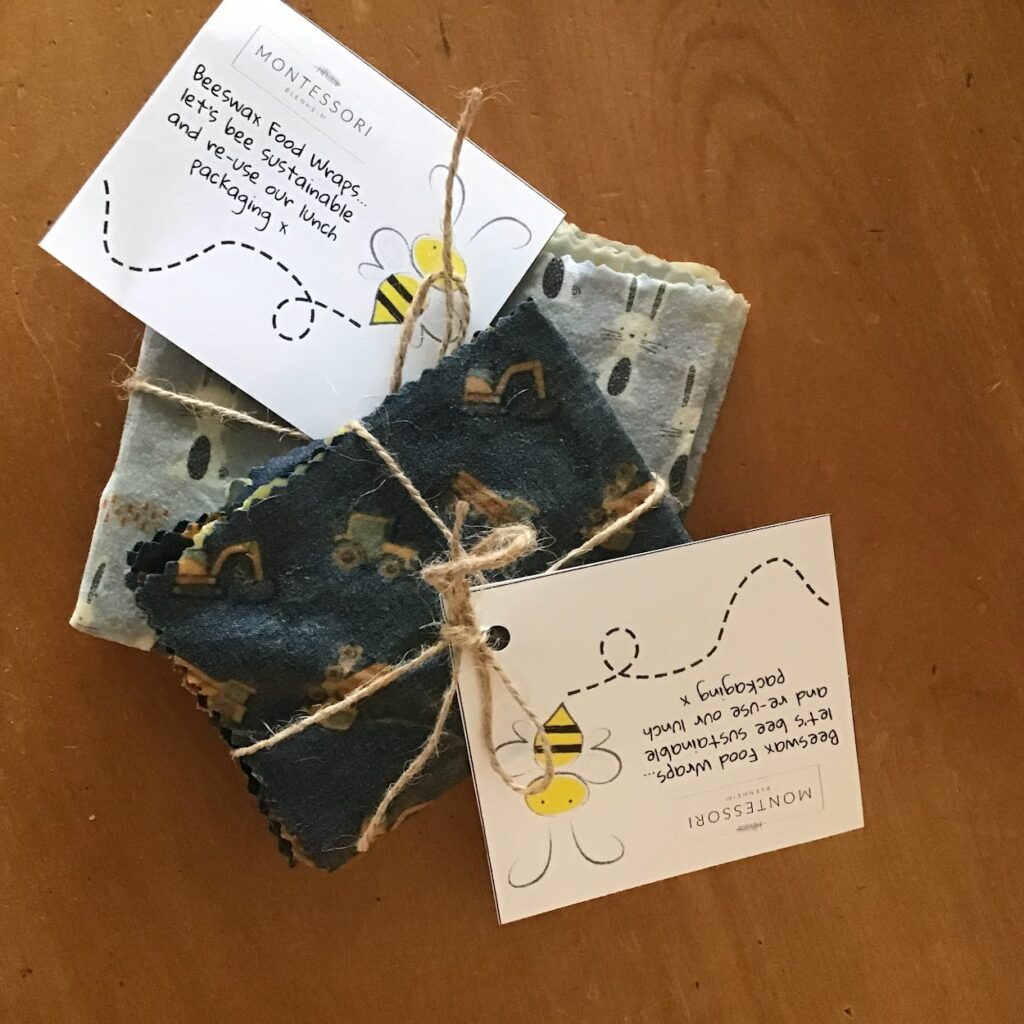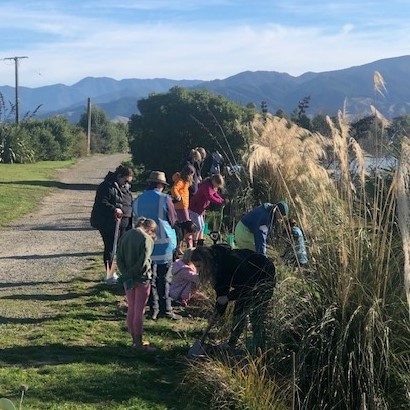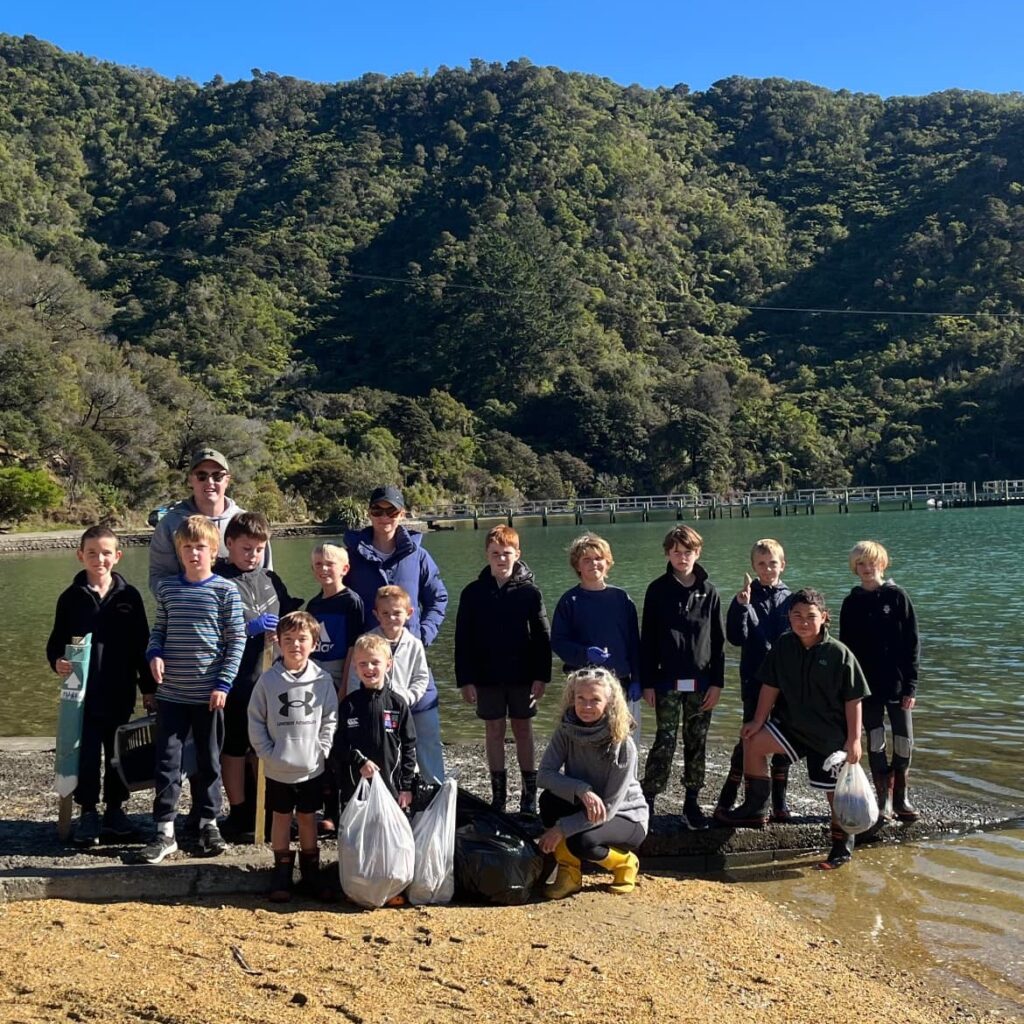Enviroschools and Junior Landcare joined up again in term 4 to give the opportunity for rangatahi to become scientists in a Bioblitz at Grovetown Lagoon.
Biodiversity brings to mind thoughts of remote, wild places full of extraordinary animals and plants. While wild areas are rich in biodiversity, we can easily overlook the variety of species that surround us every day in easy to reach, local spaces - even on the school playing field. Did you know that New Zealand has 2000 species of spiders and you are likely to find one million spiders in one hectare of paddock land! Angela, Wendy (NZ Landcare), Rosanne and Justine (Wetland Warriors) welcomed rangatahi from Queen Charlotte College and...
Read More On the 29th of October the first ECE written poem was unveiled to be a part of the Taylor River Writers Walk.
Huddled under umbrellas next to the Old Mill on the Taylor River the rain didn’t put anyone off. Students from both Springlands School and Mayfield Kindergarten opened the celebration with waiata. Several speeches followed to acknowledge how special this addition was to an already very well valued part of the Taylor River.
-
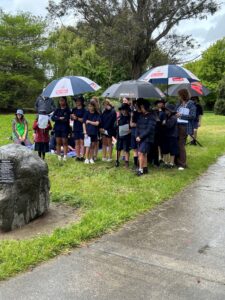
- Springlands School
-
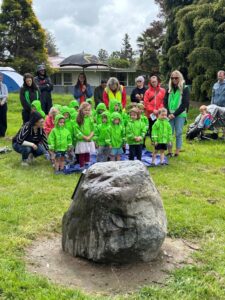
- Mayfield Kindergarten
This year's poem was a collaborative effort from the Marlborough Kindergarten Association. It combines the voices of multiple tamariki to share their message. Titled Te Awa o Omaka, it reads beautifully about what they value from the...
Read More Keep New Zealand Beautiful is a nationwide not-for-profit organisation that encourages communities to engage in activities promoting environmental stewardship. It focuses on reducing waste, recycling, planting trees, and beautifying local areas. The initiative helps foster a sense of pride in New Zealand’s natural environment and encourages everyone, especially young tamariki, to participate in actions that create a more sustainable future. Through hands-on projects, children can learn the importance of environmental care, laying the foundation for them to become kaitiaki (guardians) of the land.
During Keep New Zealand Beautiful Clean Up week, the tamariki at Montessori explored ways to care for Papatūānuku by making their very own beeswax wraps. The tamariki were fascinated as the...
Read More Earlier in the year, Tua Marina and Springcreek Schools teamed up to replant a section of the Kahikatea Reserve. This amazing restoration project was started 20 years ago. The aim being to return the land to original ngahere and water ways. A group sitting quietly counting birds When planting the damaged section, we could hear numerous birds in the maturing ngahere beside us. Of course we also had piwakawaka ducking and diving around us as we disturbed the insects that piwakawaka love to eat. We came up with the idea of returning each year to do a bird count. Both in the 20-year-old section and the newly planted section. This would measure...
Read More In partnership with Junior Landcare, students in your Envirogroup have the opportunity to work alongside the WW volunteers in the wetlands nursery or around the Grovetown Lagoon while learning about the wetlands and why its restoration is so important.
Each Envirogroup that takes part in a working bee with the WW volunteers, gets the opportunity to tour Koru Native Wildlife Centre. This tour normally costs $5/child, but will be offered free as part of the Junior Landcare programme.
This is a great opportunity for students to learn more about Marlborough gecko, giant wētā and kakariki, provide context and motivation for restoration, and is a wee “thank you” for their work with the WW volunteers.
There are...
Read More In partnership with Junior Landcare, students in your Envirogroup have the opportunity to work alongside the WW volunteers in the wetlands nursery or around the Grovetown Lagoon while learning about the wetlands and why its restoration is so important.
Each Envirogroup that takes part in a working bee with the WW volunteers, gets the opportunity to tour Koru Native Wildlife Centre. This tour normally costs $5/child, but will be offered free as part of the Junior Landcare programme.
This is a great opportunity for students to learn more about Marlborough gecko, giant wētā and kakariki, provide context and motivation for restoration, and is a wee “thank you” for their work with the WW volunteers.
There are...
Read More In partnership with Junior Landcare, students in your Envirogroup have the opportunity to work alongside the WW volunteers in the wetlands nursery or around the Lagoon while learning about the wetlands and why its restoration is so important.
Each Envirogroup that takes part in a working bee with the WW volunteers, gets the opportunity to tour Koru Native Wildlife Centre. This tour normally costs $5/child, but will be offered free as part of the Junior Landcare programme.
This is a great opportunity for students to learn more about Marlborough gecko, giant wētā and kakariki, provide context and motivation for restoration, and is a wee “thank you” for their work with the WW volunteers.
There are 3...
Read More Every Wednesday morning a volunteer team calling themselves the Wetland Warriors meet at Grovetown Lagoon to plant natives, weed, clear paths, raise plants and trap pests to protect the beautiful environment around the Lagoon.
This term on partnership with Junior Landcare, Envirogroup’s have the opportunity to work alongside the Wetland Warriors (WW) volunteers while learning about the wetlands and why its restoration is so important. Unfortunately the first session was called off due to wet weather, and so in the first week of June Tua Marina and Waikawa Bay Schools became the first groups of students to join the WW team. Their job for the morning was to plant grasses and trees on the banks of...
Read More The students at Waikawa Bay School have been learning about the values of Matariki with a focus on tuarua - giving back.
Free Fair at Waikawa Bay School The first three weeks of term 2 students explored what it means to help and support others. They explored ways that appreciation can be shown and developed an understanding of how in working together as a community everyone is valued. Ideas came flooding in as to how the school could say thank you to the people and local community groups that had given time, shared their knowledge and expertise, donated sports and classroom equipment, and funding for projects. The ideas were sorted and grouped together...
Read More If you haven’t visited Kahikatea Reserve between Springcreek and Tua Marina, you must put it on your to-do list! This 20 year restoration of bare pasture land features beautiful Rimu, Totara, Kahikatea, Matai, Manuka, Tarata, Lancewood, Harakeke, Kawakawa, Koromiko and a myriad of other natives. The aim of the restoration is to return the land to its origins of a lowland swamp ngahere dominated by the mighty Kahikatea of which there are only 3 semi-mature trees left standing on the Wairau Plains. This was the backdrop of a planting project with Tua Marina and Springcreek Schools. Unfortunately, a small fire destroyed part of the restoration late last year. The crew of Landscape Marlborough wanted to...
Read More 